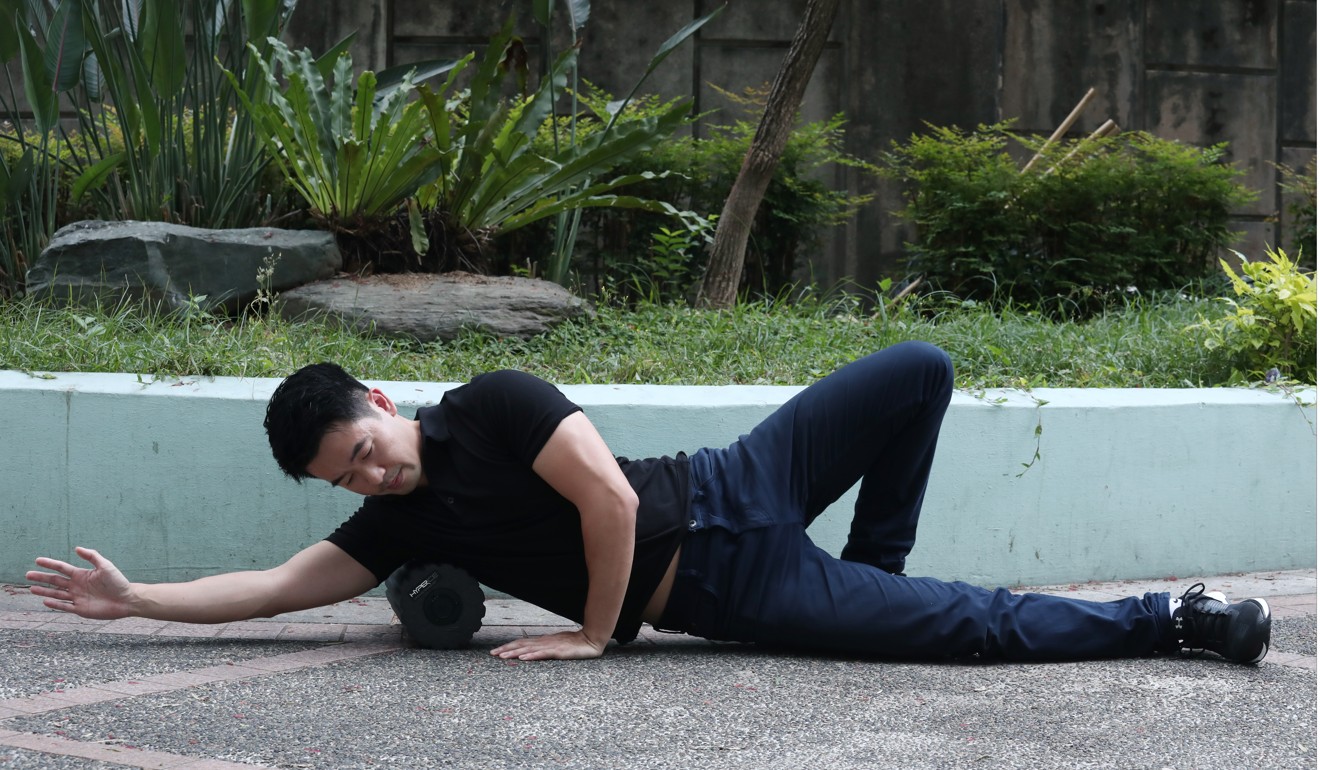
Foam roller exercises: how to get the most out of your roller, and its limitations: tips from a China Olympic team chiropractor
You can’t walk into a gym without seeing one, but what use are foam rollers? Strength and conditioning specialist Ian Shaw shows the best ways to use one and how to maximise the long-term benefits rolling delivers to your body
Some are ribbed, some vibrate, some are longer, some are harder … and you’ve probably seen them at your gym, or in fitness stores. Foam rollers are practically a staple in every 21st century fitness routine – but what do they do, exactly?
Don’t worry – stopping exercise won’t turn muscle into fat
Foam rolling is a form of self-myofascial release (SMR), which is said to increase flexibility, range of motion (ROM) and blood flow while reducing pain in muscles, tendons, ligaments and joints – collectively called your connective tissues.
Its advocates say it helps relax your muscles so you can perform certain movements – such as squats – more easily, or relieve tension from sitting at your desk all day. It is also proven to be more effective than static stretching because it can target sore or stiff spots more effectively.

Unfortunately, the positive effects of foam rolling on your connective tissues lasts no more than 10 minutes because the force it exerts on your connective tissues is small.
Take the iliotibial (IT) band – a ligament that extends from the hip to the shin – as an example. “Exerting 900kg of force onto your IT band would deform it by only one per cent, so by foam rolling it, you’re doing very little to it,” explains Ian Shaw, who is set to be a chiropractor with the Chinese Olympic team, and is a strength and conditioning specialist.

Shaw’s work with the Chinese Olympic team will include treating any injuries athletes incur so they can continue training and competing at the highest level, and to implement injury prevention programmes to reduce injury rates.
It’s about breaking the pattern of slouching at your desk. If you don’t hit ‘reset’, eventually, gravity wins and you get stuck with poor posture
As for the rest of us, to achieve increased flexibility and range of motion that last beyond 10 minutes, Shaw recommends resistance training, as it puts more force onto a joint and the muscles surrounding it. This begs the question, if resistance training does the job, why bother foam rolling at all?
However, as a warm-up routine before strength or resistance training, foam rolling can improve the quality of your workout by relaxing your connective tissues and thus improving their flexibility and range of motion.
“Foam rolling itself won’t do much, but pair it with strength or resistance training and they’ll work very well together,” says Shaw.

In addition to being a good warm-up exercise, research shows that foam rolling can also help your body get over post-workout soreness faster. In other words, you don’t have to be an athlete to benefit from foam rolling.
If you are relatively sedentary, foam rolling can offer respite from prolonged sitting. Shaw compares it to hitting the “reset” button.
“It’s about breaking the pattern of slouching at your desk. If you don’t hit ‘reset’, eventually, gravity wins and you get stuck with poor posture.”
Diet and fitness regimes of a Transformers stuntman: boxing, tae kwon do, weights, and hold the sugar
While the obvious benefits of foam rolling include relief for tight shoulders and hip flexors, neck and back pain, and bad posture, the simple act of leaving your desk for a brief foam rolling session is also beneficial to vascular health, as it may improve blood flow.
With foam rolling, less is more. Considering that the effects of it last only about 10 minutes, Shaw says warming up with a five- to 10-minute foam rolling session should suffice. He also recommends you don’t hold the foam roller at stiffer or sorer spots for longer than 60 seconds at a time.

“You won’t benefit from pausing over a targeted area for more than 60 seconds,” he says. “If you’re spending 30 to 45 minutes to warm up on a foam roller, there are probably better ways to warm up.”
Alternatively, get more from your foam rolling session by combining it with weighted stretching. “Putting more force into the joint – for example, by placing weights on areas you want to stretch out – can help you achieve a more functional and greater ROM,” explains Shaw. “So foam rolling and weighted stretching combined can help you achieve longer lasting effects.”

One thing foam rolling won’t do is repair injured connective tissues. Shaw urges people with injuries to first consult medical professionals, who may then recommend foam rolling as part of the rehabilitation process. He also says you should stop foam rolling if it increases any pain you are feeling or if it induces numbness, tingling, or bruising.
Hong Kong veteran basketball player gives his tips on how to stay fit as you get older
As for whether you should go for a smooth or ribbed, or vibrating or regular foam roller, Shaw says it’s all down to personal preference.
“A vibrating foam roller will stimulate more receptors in your body, which can help your muscles relax further, but they’re also a lot more expensive. It’s a matter of cost-effectiveness.”

